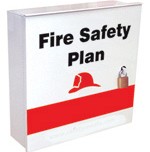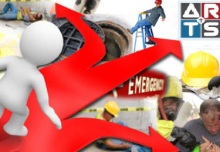 Safety View from Over Here
Safety View from Over Here
Safety consultants are asked to come into a company and help solve a problem or complete a task. Many companies simply do not have the staff to complete all of the required tasks, let alone the elective tasks to customize and improve upon requirements in the desired timeline. Some of the tasks involve completing hazard assessments, compliance inspections, updating policies and/or procedures and conducting training sessions.
I was recently asked to provide a training session for a company on a confined space non-entry rescue. I met with the safety department personnel to determine what their needs were and how to best develop a training plan to meet those needs. We toured their facility. A facility tour is crucial in order to get a picture of what the employees are currently doing and to get an understanding of the layout\design of the facility. It is best to try to observe the employees performing the tasks associated with the training that will be conducted. Observation allows a “different set of eyes” to see what is being done. The view from company personnel is often narrowly focused because they’re used to seeing the tasks, it is routine for them and vital information can be omitted.
Sometimes, observation of employees performing a particular task is not available because of planning and scheduling or simply the situation. When it is situational, such as emergency response training, you have to do your best to prepare for training by using experience and knowing from experience how most people react the majority of the time. For example, there has only been one time I was preparing for emergency response training and I happened to be able to observe the emergency response team in an actual situation during my preparation visit, but because of my experience as an Assistant Fire Chief and Hazardous Materials Response Team member I’m known for my informational and successful emergency response training.
The facility review is a great time to gather data. In this particular case, we were looking at the equipment needed for employees to use for confined space entry and non-entry rescue. Confined Space Entry is one of the required General Industry OSHA programs. https://www.osha.gov/SLTC/confinedspaces/index.html
As we were looking at the facility, we observed that when the facility was designed, there were no anchor points identified for use with fall arrest systems or non-entry rescue retrieval devices for entry into a vertical confined space. This will be a major hurdle to overcome. Without identifying these anchor locations, there would be little value to conduct training because all of the critical aspects of the procedures could not yet be identified.
After the facility tour, we discussed some options for the infrastructure to provide the necessary anchor points, because without them non-entry rescue would be nearly impossible. We had some homework to do.
As an outside consultant I am not bound by internal company constraints. While economic constraints are very real, I can review and recommend a variety of possible solutions without immediately dismissing them due to cost. Each facility has unique challenges to overcome and with those challenges come questions and ideas to discuss.
One option here may be to find out if the space needs to be entered at all. As a consultant, I ask lots of questions not only to get the best possible understanding of the situation but also, when necessary, to challenge the “status quo”. Why does the space need to be entered? Can all the required tasks be completed outside the space? Can some of the tasks be completed outside the space to minimize the time inside the space? What are the alternatives to entry?
If the space must be entered, then we need to look at what engineering controls are necessary. Can anchor points be added to the infrastructure? Can the spaces be re-designed to eliminate the need for entry? Asking questions of the safety and engineering staff is a great way to get ideas out on the table to be evaluated.
Clearly everyone has the goal of not having an employee injury or incident. The use of an outside consultant helps a company take a look from a different perspective to assist in providing a safe environment in which to work.













